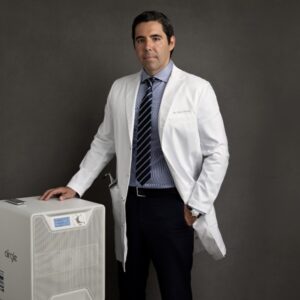Nov 1
2022
Why Dental Practices Must Prioritize Indoor Air Quality To Keep Patients Safe

By Dr. Tyler Orehek, president North America, Airgle.
As we continue to live with COVID-19, the nation is adapting to a new normal. While hopes of fully eradicating the virus are all but gone, the government, businesses, and individuals are now adjusting to living with it.
One industry that must make this a priority is dentistry. Patients wearing masks while at dental offices, is all but impossible. Because of this, the dental industry must take every precaution possible to lower the risk of airborne pathogens spreading during procedures.
One of the most effective ways that the dental industry can adjust to this new normal as it relates to Covid-19, and keep patients safe, is by utilizing air purification systems. So, what exactly should dentists know about indoor air quality (IAQ), and the measures they can take to safeguard it?
Dentistry and Aerosols
It’s important to keep in mind that dentistry generates aerosols. Dental handpieces, air-water syringes and ultrasonic scalers are all capable of producing such aerosols, which typically consist of a mix of air and water from these devices and from the patient’s saliva. These aerosols are capable of remaining suspended in the air for long periods of time and travel even greater distances than splashes and splatters. Thus, the potential for disease transmission, even after the infected individual has left the space, remain high.
While personal protective equipment in dental offices is always recommended, there are additional steps that practices can take to protect both its employees and patients alike.
Deploy Medical Grade Air Purification
One of the best ways is through the use of medical grade, stand-alone air purification systems. The ability of a purifier to capture and contain airborne contaminants, such as pathogens, volatile organic compounds, ultra-fine particulates, and aerosols in general, is primarily determined by the type of filtration used. An air purifier’s effectiveness is correlated with the quality and integrity of the purification filter media itself.
While traditional HEPA filters can be effective at capturing more common pollutants, cHEPA filters are much better equipped at handling the smallest of particles and viruses, which are especially threatening in a dental setting. Cleanroom-grade cHEPA filters have a capture threshold down to .003 microns, a significantly smaller threshold than standard HEPA filters. These medical grade air purification units are capable of capturing the smallest airborne pathogens.
HVAC systems are best equipped for heating and cooling a building, which means that they must be porous enough to allow small contaminants and potentially dangerous pathogens to flow through. Many viruses are as small as 0.1 microns in diameter, which HVAC systems are unable to capture.
This is why medical grade, stand-alone air purification units are the most effective way to filter out pathogens, including viruses, bacteria and mold spores. Additionally, mobile units allow offices to move them to different treatment rooms where most needed.
Increase Ventilation
In addition to deploying air purification systems, increasing air flow and ventilation remains a valuable tool for improving air quality. With large numbers of patients often visiting dental offices, and taking into account the aerosols produced on any given day, increasing air flow is an essential way to improve indoor air quality.
Frequently, HVAC systems are put on the “auto” setting, and turned off at certain times throughout the day. This negatively impacts air quality and allows contaminants and aerosols to linger for greater periods of time. Ensuring that systems are consistently left on while patients are in the office, and even for some time after, helps facilitate necessary ventilation.
For dental offices, which often require patients to be unmasked and where high levels of aerosols are created, optimizing indoor air quality is key to promoting safety for patients and employees alike. Understanding the risks unique to dental offices, employing air purification units and increasing ventilation are the best ways to ensure success in keeping people safe.